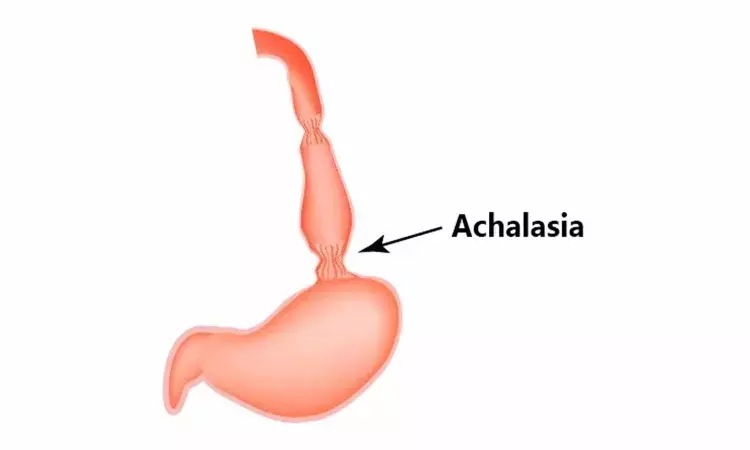- Home
- Medical news & Guidelines
- Anesthesiology
- Cardiology and CTVS
- Critical Care
- Dentistry
- Dermatology
- Diabetes and Endocrinology
- ENT
- Gastroenterology
- Medicine
- Nephrology
- Neurology
- Obstretics-Gynaecology
- Oncology
- Ophthalmology
- Orthopaedics
- Pediatrics-Neonatology
- Psychiatry
- Pulmonology
- Radiology
- Surgery
- Urology
- Laboratory Medicine
- Diet
- Nursing
- Paramedical
- Physiotherapy
- Health news
- Fact Check
- Bone Health Fact Check
- Brain Health Fact Check
- Cancer Related Fact Check
- Child Care Fact Check
- Dental and oral health fact check
- Diabetes and metabolic health fact check
- Diet and Nutrition Fact Check
- Eye and ENT Care Fact Check
- Fitness fact check
- Gut health fact check
- Heart health fact check
- Kidney health fact check
- Medical education fact check
- Men's health fact check
- Respiratory fact check
- Skin and hair care fact check
- Vaccine and Immunization fact check
- Women's health fact check
- AYUSH
- State News
- Andaman and Nicobar Islands
- Andhra Pradesh
- Arunachal Pradesh
- Assam
- Bihar
- Chandigarh
- Chattisgarh
- Dadra and Nagar Haveli
- Daman and Diu
- Delhi
- Goa
- Gujarat
- Haryana
- Himachal Pradesh
- Jammu & Kashmir
- Jharkhand
- Karnataka
- Kerala
- Ladakh
- Lakshadweep
- Madhya Pradesh
- Maharashtra
- Manipur
- Meghalaya
- Mizoram
- Nagaland
- Odisha
- Puducherry
- Punjab
- Rajasthan
- Sikkim
- Tamil Nadu
- Telangana
- Tripura
- Uttar Pradesh
- Uttrakhand
- West Bengal
- Medical Education
- Industry
Increased blown-out myotomy risk observed in POEM-treated achalasia patients: Study

A recent study published in the American Journal of Gastroenterology raised concerns about the long-term effects of peroral endoscopic myotomy (POEM) in the treatment of achalasia. The study analyzed the prevalence, risk factors and associated symptoms of blown-out myotomy (BOM) among patients treated with POEM.
Achalasia affects the esophagus and makes it difficult for food and liquid to pass into the stomach. POEM is a minimally invasive procedure to treat achalasia by cutting the muscles at the lower end of the esophagus. Despite being effective, POEM distends the distal esophagus which is known as BOM, where the esophageal diameter increases by more than 50% at its widest point in the distal esophagus.
The study meticulously analyzed data from a randomized controlled trials that compared POEM with pneumatic dilation (PD) for achalasia. A total of 74 patients were treated at the study center, with 55 patients had available follow-up data over five years. Of these, 32 patients (58%) were treated with POEM and 23 (42%) with PD.
The results expressed a significant increase in the incidence of BOM among the POEM patients. Initially, at three months post-treatment, 11.5% (4 out of 38) of POEM patients developed BOM. This rose to 21.1% by one year, 27.8% by two years and 31.3% by five years. Also, none of the patients treated with PD developed BOM during the study period.
The study also highlighted that patients who developed BOM had higher Eckardt scores implying severe achalasia symptoms. These patients had higher total scores and more pronounced regurgitation symptoms when compared to the patients who underwent POEM without developing BOM. Also, POEM patients with BOM reported significantly more reflux symptoms. 85% of these patients experienced reflux when compared to 46% of the patients without BOM. They also had a higher acid exposure time, with an average of 24.5% when compared to 6% in non-BOM patients.
Overall, the findings suggest that while POEM is effective in treating achalasia, it carries a substantial risk of developing BOM which in turn is associated with increased acid exposure, reflux symptoms, and regurgitation. This study highlights the need for further research and clinical studies to optimize patient outcomes and illuminate the importance of weighing the benefits and risks of POEM.
Source:
Kuipers, T., Ponds, F. A., Fockens, P., Bastiaansen, B. A. J., Pandolfino, J. E., & Bredenoord, A. J. (2024). Focal Distal Esophageal Dilation (Blown-Out Myotomy) After Achalasia Treatment: Prevalence and Associated Symptoms. In American Journal of Gastroenterology. Ovid Technologies (Wolters Kluwer Health). https://doi.org/10.14309/ajg.0000000000002816
Neuroscience Masters graduate
Jacinthlyn Sylvia, a Neuroscience Master's graduate from Chennai has worked extensively in deciphering the neurobiology of cognition and motor control in aging. She also has spread-out exposure to Neurosurgery from her Bachelor’s. She is currently involved in active Neuro-Oncology research. She is an upcoming neuroscientist with a fiery passion for writing. Her news cover at Medical Dialogues feature recent discoveries and updates from the healthcare and biomedical research fields. She can be reached at editorial@medicaldialogues.in
Dr Kamal Kant Kohli-MBBS, DTCD- a chest specialist with more than 30 years of practice and a flair for writing clinical articles, Dr Kamal Kant Kohli joined Medical Dialogues as a Chief Editor of Medical News. Besides writing articles, as an editor, he proofreads and verifies all the medical content published on Medical Dialogues including those coming from journals, studies,medical conferences,guidelines etc. Email: drkohli@medicaldialogues.in. Contact no. 011-43720751


